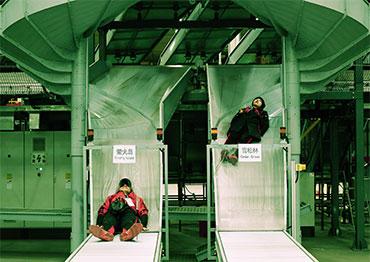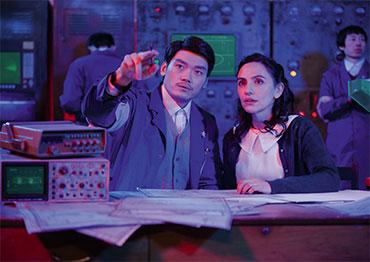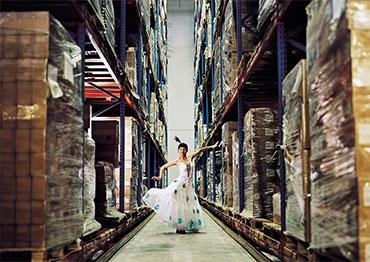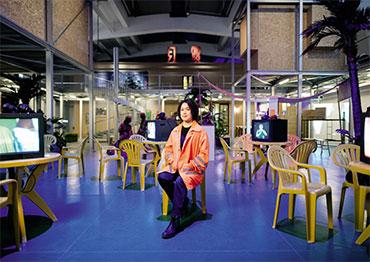The venue is alive with loud voices, palm trees and roadside food stands. Filtering between the flashing neon lights are visitors: young fans, amateur photographers, couples with kids in tow, and of course livestreamers.
The resulting scene is more like a bustling narrow street in southern China than an art show. Unlike most retrospectives, Cao’s work is not presented chronologically. This allows visitors to begin Cao’s story wherever they want.
Cao hopes to make her work more accessible and is interested in what people from all backgrounds can extract from it. Individual experience and perception is a reoccurring theme in Cao’s works, such as the dreamed romance of a milkman (Milkman, 2005), changes in the lives of people living in an urban village (San Yuan Li, 2003) or the everyday lives and dreams of factory workers (Whose Utopia, 2006).
Cao was born in 1978 to artist parents who taught at Guangzhou Academy of Fine Arts (GAFA). The Cultural Revolution (1966-76) had just ended, along with its previous restrictions on art. Feeling unfettered, artists like Cao’s parents plunged into creating and teaching art. The couple spent a lot of time touring the countryside, seeking inspiration from the lives of ordinary people.
Cao often traveled with her parents to install her father’s sculptures. Wherever they went, the family lived with locals and learned their dialects. Among these places, a small fishing village in Guangdong Province stands out, Cao said. Her mother had lived there when she was younger and went back with young Cao after she became an art teacher. Her mother kept in contact over the years, making sketches for the villagers and exchanging letters after returning to Guangzhou.
As an adult, Cao returned to the same village to paint, and learned that a young woman whom her mother sketched had become a grandmother. “We built relationships that span generations,” Cao told NewsChina.
At the entrance of her latest exhibition, viewers enter the Artist’s Room, a small exhibition displaying Cao’s belongings, photos and paintings from her early years that tell the beginnings of her career and her artistic progression.
Cao told NewsChina that she grew up watching her father, Cao Chongen, sculpt statues of famous figures in modern Chinese history such as Sun Yat-sen, Zhou Enlai and Deng Xiaoping. Instead of toys, her mother gave her drawing pads. Her two elder sisters liked sketching, but Cao preferred telling stories through short graphic novels.
But as a child, Cao felt her parents’ mediums were out of fashion. In the 1980s and 90s, Hong Kong and Taiwanese pop culture were all the rage in the Chinese mainland, and the southern city of Guangzhou, which was visibly benefiting from China’s reform and opening-up, was at the forefront of this cultural influx. At a time when the majority of Chinese mainlanders had never seen a fashion magazine, 13-year-old Cao was already a regular reader of teen Hong Kong magazines like Yes! and Sister’s Pictorial.
She drew comic strips of TV stars in the margins of her school workbooks and spent the money her parents gave her on breakdancing classes. She practiced the moves with friends and taught her classmates, and then organized a performance at her school. She recorded all these fun moments, first on film, then digitally. These were Cao’s first serious attempts at art. Unlike her parents, she chose mediums such as hip-hop dance, photography and video, all new arrivals to China’s thriving market economy.
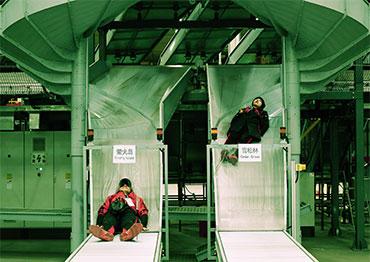
 Old Version
Old Version
